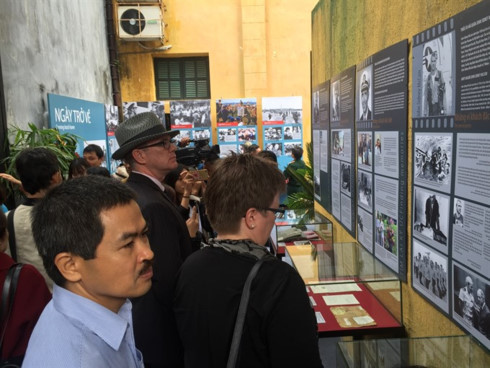
Photos and objects on display at the exhibition (Photo: hoalo.vn)
The exhibit’s 250 items recall the dramatic 12 days and nights of the fierce US bombing attacks, and the city’s defense by the Vietnamese people, and retells the stories of the American pilots imprisoned in Hoa Lo.
Raymond Lombardi, a visitor from the US, said, “A lot of mixed feelings. I’m very curious about the history both for Vietnam and America, so mixed feelings. But it’s very helpful and informative.”
Touring the first exhibition hall, “Facing the B52s”, he viewed photos of Hanoi and Hai Phong, which were heavily bombarded by US planes.
The second hall, “Hilton Hotel-Hanoi”, which was the nickname given to Hoa Lo Prison by US prisoners, tells the stories of the prison guards who guarded the detained American pilots.
The third hall, “Returning day” has photos and objects related to the exchange of prisoners of war by the governments of Vietnam and the US following the signing of the Paris Peace Accords in 1973.
The final hall, “Building up the future”, shows the Vietnamese people’s longstanding aspirations for peace.
The exhibit helps visitors realize the severe destruction and painfully grim nature of war.
Pham Hong Loan of Hanoi said, “I felt thoughtful when visiting the exhibition and the whole Hoa Lo relic site. I’ve read about the war with the US, but being here today, seeing the photos and documents on display helped me better understand the historical background. Behind each photo and artifact is a touching story that reminds us of the value of peace.”
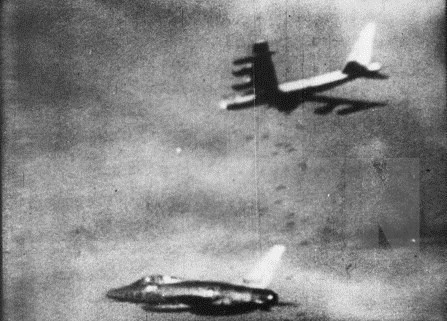
B-52 fighter aircraft used by the US to drop bombs on villages in Hanoi, Hai Phong and other targets from December 18-29, 1972. (Photo: VNA)
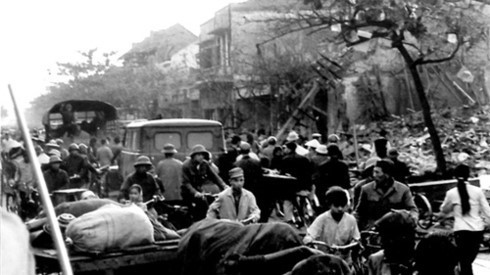
Kham Thien street in Hanoi fell into ruin on the night of December 26, 1972.
The exhibition recalls both the struggles of the people of Hanoi and the daily lives of the American prisoners of war in Hoa Lo prison.
Army non-commissioned officer Robert P. Chenoweth entered the Vietnam War in January, 1967, after 7 months of military training and helicopter school. He was not taught anything about Vietnam or its culture or history. What he learned in training was not to trust any Vietnamese.
In February, 1968, a helicopter carrying Chenoweth and others was shot down in Quang Tri Province. One American died and the others were captured. During the time he was detained at the “Hanoi Hilton”, Chenoweth understood the war in which he participated.
He realized that much of what he was told about the war was not true. He learned something about life in Vietnam and had a chance to see the determination people exhibited when the American bombers came.
He said, “I stayed only a short time at Hoa Lo. But my stay here began in the midst of the nightly B52 attacks. Everyone was worried about the damage happening around us. And we hoped for the safety of the family of all the camp cadres. During that dangerous time, the guards and interpreters asked me if I would like to take home a tea set. I was grateful for the gesture of kindness. I keep it at my home today because I was afraid it would be damaged on the plane trip coming here. Perhaps on another visit I can bring it back and give it to the museum.”
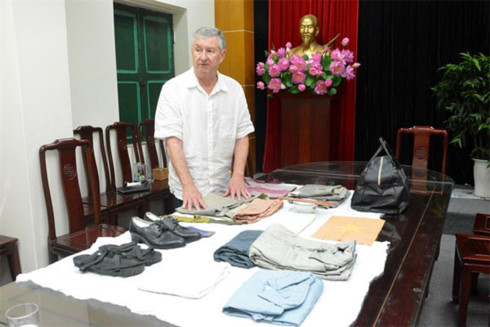
American anti-war prisoner sergeant Robert P. Chenoweth presented 12 memorabilias to Hoa Lo prison, which included items he used in prison, such as clothes, towels, bowls, and chopsticks (Photo: hoalo.vn)
When he returned to the US, Chenoweth joined the antiwar movement. 45 years later he was at Hoa Lo prison again. He presented 12 memorabilia to Hoa Lo prison, which included items he used in prison, such as clothes, towels, bowls, and chopsticks. Everything was carefully kept in an old bag, the one with his Vietnamese name “Tre” on it.
Chenoweth also donated the flag of Vietnam that Colonel Tran Trong Duyet, the former camp officer, presented to him. He was moved to tears when he recalled the care provided by the Vietnamese prison guards.
“When I learned that I was going home, the camp officers asked me if I would like to take home an object to remember my stay in Hoa Lo in Vietnam. I asked if I could have a flag of Vietnam *crying* the flag became a powerful symbol of all the things I had learned during my captivity. It reminded me of the long struggle of Vietnam to protect its independence. And here my story comes full circle. 45 years later, I am here again. I’m very glad that I’m here, happy to see again the camp officers. They’re the people from whom I learned a new way of looking at the war,” he said.
Robert P. Chenoweth was delighted to meet some of the prison guards who guarded the detained American pilots. One of them was Colonel Luu Van Hop.
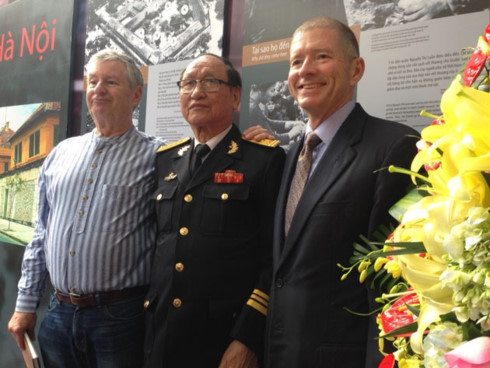
American POW Robert P. Chenoweth (L) standing next to former Hoa Lo prison warden Tran Trong Duyet at the opening ceremony of the exhibition (Photo: Tuyet Loan)
He recalled memories of working as a prison guard at Hoa Lo prison. “The exhibition shows just one part of our work. They were treated well, especially considering the difficult conditions of the Vietnamese people during the war. All the American pilots and prisoners of war were allowed to play sports in the prison yard, exercise, and learn musical instruments. Every year, we let them visit some spots which were heavily bombed by US planes. They’re allowed to receive and send letters back to their family monthly, and receive gifts up to 5kg/month (equivalent to 11 pounds). Many American pilots returned home with good political views, that contributed to the normalization of the Vietnam -US relationship.”
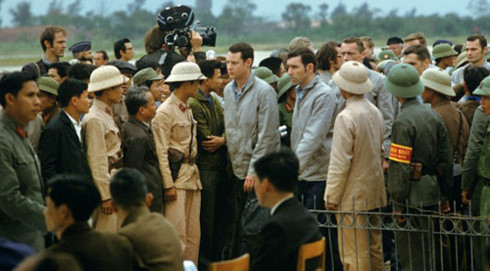
US pilots were handed over at Gia Lam airport in Hanoi
Thomas Eugene Wilber is the son of Navy Commander Walter Eugene Wilber who was also jailed in Hoa Lo Prison.
Wilber donated to Hoa Lo prison some of his father’s belongings, including the uniforms he wore during his detention in Hoa Lo prison, a letter he wrote to his family in 1970, and a matchbox given to him by the Government of Vietnam when he returned to the US in February 1973. This is the 14th time Thomas has come to Vietnam.
He said, “I hope that the memories shaped by the pictures, displays, and descriptions in the exhibition will help people understand the depth of resilience of the people of Vietnam and the rectitude of their cause, a free and independent country. It’s my wish that all who visits here will better understand the rich history documented by this display and will develop a deeper appreciation for peace.”
On January, 27th, 1973, the Paris Peace Accords were signed, ending the war and restoring peace. The Vietnamese and American governments returned detained prisoners to each other.
The Vietnamese government released American pilots, prisoners of war, who were detained in the “Hanoi-Hilton”. The "Hanoi-Dien Bien Phu in the Air" victory forced the US to the Paris negotiating table. The Americans withdrew their forces from South Vietnam, leading to national reunification two years later.
Many years have passed, yet the heroic spirit of the "Dien Bien Phu in the Air" victory will remain forever.
Nguyen Thi Bich Thuy, head of the management board of the Hoa Lo Prison Relic site, said, “As time goes on, our wounds are somewhat healed. And now we’re here, together, to remember the sacrifices of our predecessors for the country’s independence. The exhibition is an opportunity for the pilots detained in the “Hilton-Hanoi” to remember their military careers, and for the Vietnamese people to look back and be proud of a glorious chapter in their history.”
The exhibition will run until February, 2018.
VOV
<table wide-image"="">
 Vietnam to host Asian Esports Championships for the first time
Vietnam to host Asian Esports Championships for the first time








